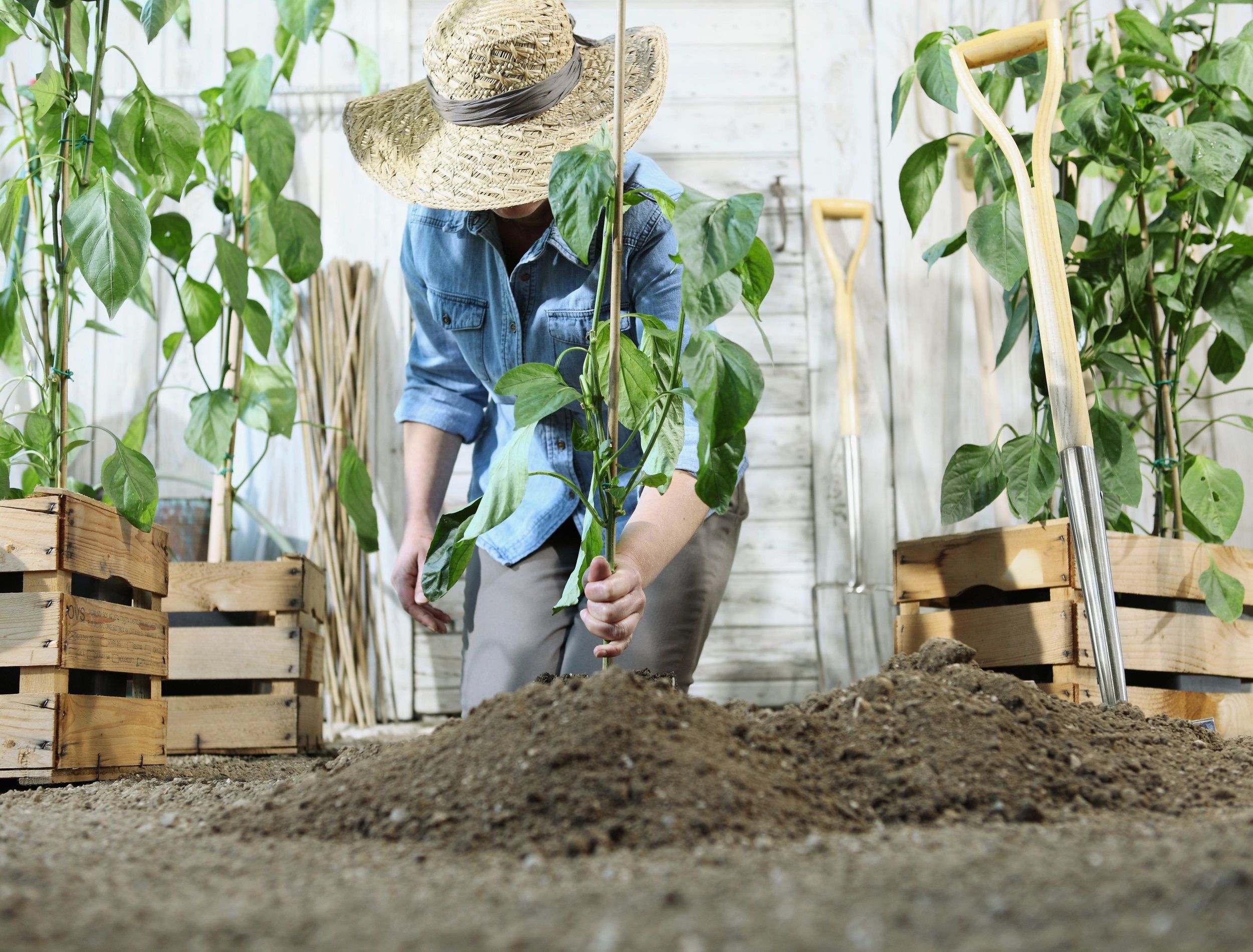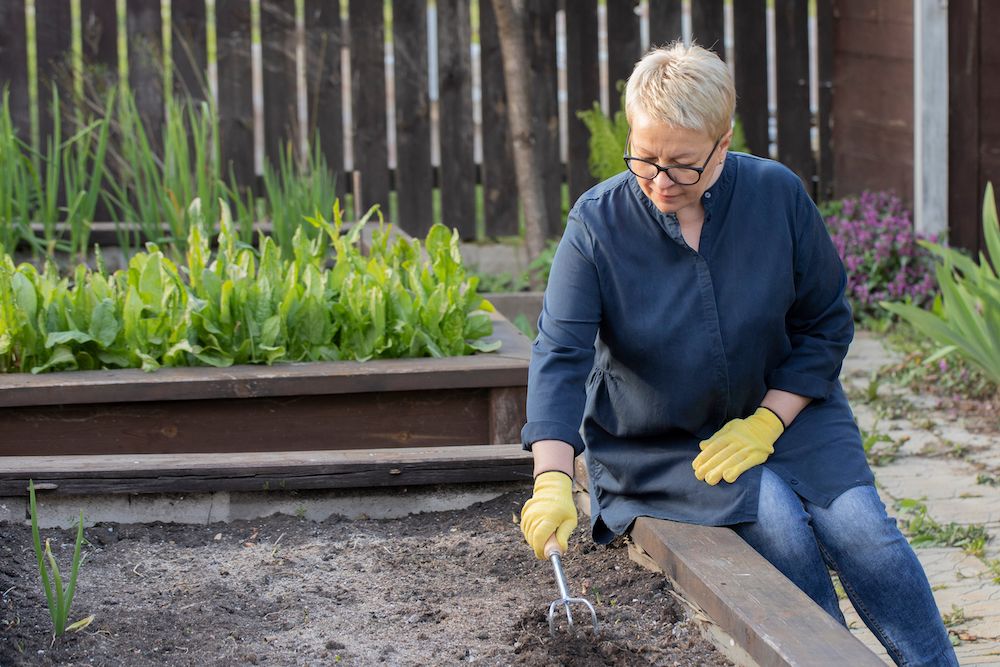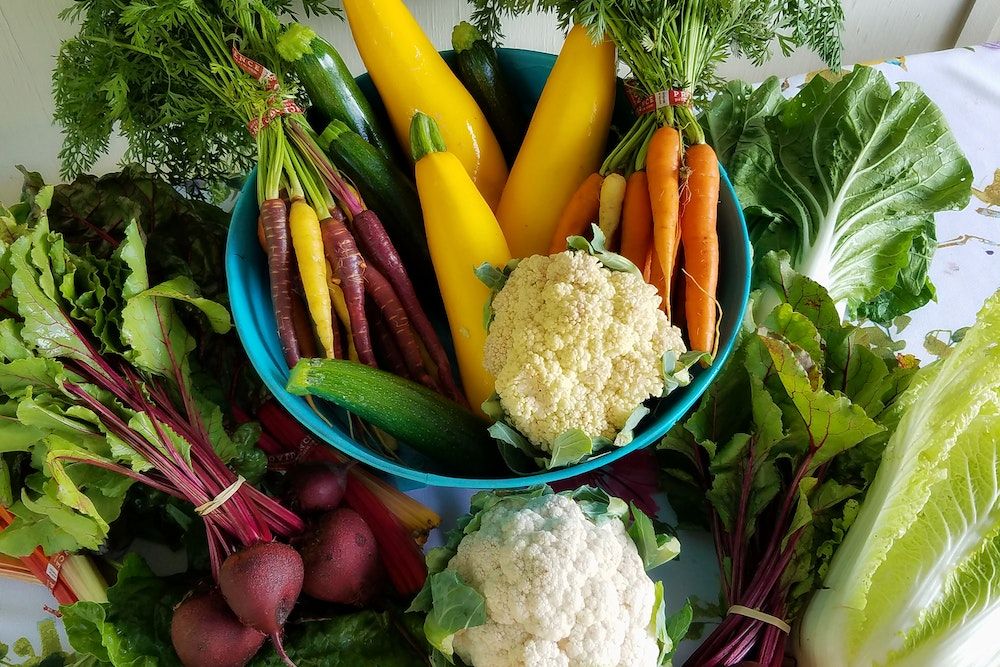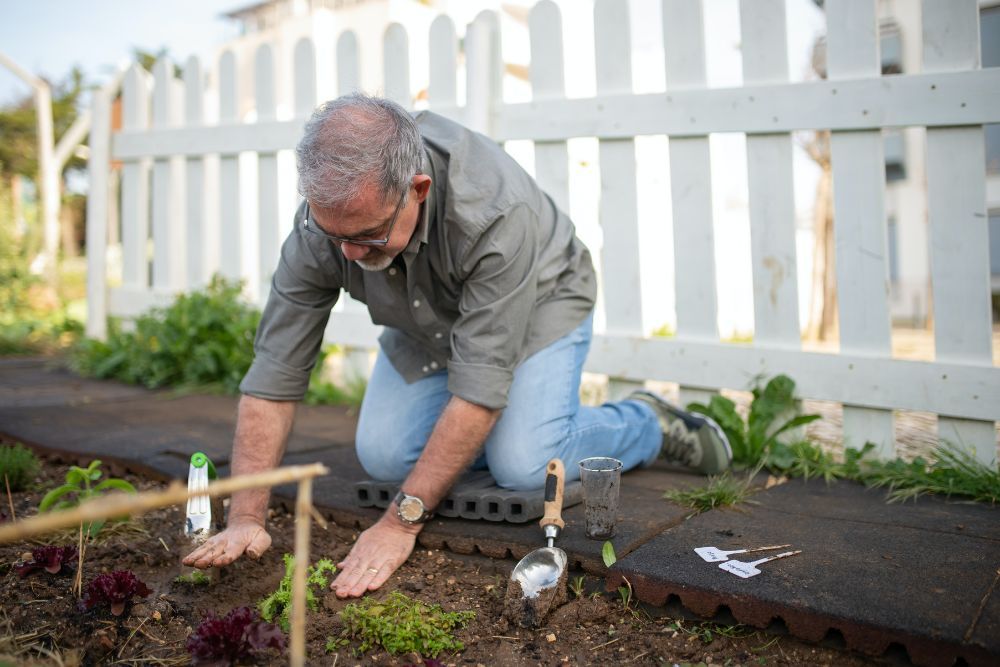Crop rotation is a great way to help improve your soil's structure and nutrient content because it returns depleted nutrients to the soil without using inorganic or synthetic products. So, if you're giving your plants the best TLC on the planet, but they're still blessing you with little harvest, the soil they're planted in may be tired, lacking nutrients, and needs a break!
So, can crop rotation help you achieve bigger and healthier yields? And how often should you rotate your crops? Is there anything to consider beforehand? Learn all this and more so that your garden stays happy and healthy!
Why Is Crop Rotation Important?
Image credits: JRLPhotographer via Canva
Soil amendments and soil conditioners are great for improving its texture and structure, which, in turn, improves its ability to recycle nutrients. However, if the soil lacks nutrients, there's nothing to recycle!
Unlike some other resources, soil needs a hand to remain healthy, and crop rotation is the most organic and chemical-free way to help replenish those nutrients.
Just like humans, soil needs a varied diet to maintain its health. By switching out the crops you plant, you give microbes in the soil an array of nutrients, fortifying your mix. Conversely, when you grow the same crop in the same spot year after year, the soil gets tired, and the nutrients eventually deplete.
Crop rotation also helps fight against pests and diseases that take up specific nutrients from the soil and damage the plants in the process. Apart from providing the soil with diversity, crop rotation can:
- Improve soil structure and health,
- Keep weeds away,
- Prevent soil erosion with cover crops,
- Increase soil fertility,
- And improve and increase crop harvest.
How Often to Rotate
Image credits: Model Republique via Shutterstock
Rotating crops is a bit like completing a puzzle. For example, assume that you have three raised garden beds.
During the first year, grow tomatoes, peppers, and eggplant (members of the Solanaceae family) in the first bed. In that same year, plant cucumber and squash (fruit from the Cucurbitaceae family) in the second bed, and cabbage and broccoli (part of the Brassicaceae family) in the third bed.
During the second year, move each group of plants one bed over. Meaning: In year one, you grew Solanaceae in the first bed. This year, move them to the bed that initially housed the Cucurbitaceae. Next, plant your Cucurbitaceae, where the Brassicaceae plants grew in year one. Finally, place the Brassicaceae in the first bed (where the Solanaceae plants originally were).
In the third year, rotate your crops again, either by moving them one bed over again or planting them where they were in year one. Placing them in the original bed in the third year completes a three-year rotation. A four-year crop rotation means each plant spends one year in each bed before moving back to its original home.
This is what a three-year crop rotation looks like:
|
Year |
First Raised Bed |
Second Raised Bed |
Third Raised Bed |
|
1 |
Tomatoes, Peppers, Eggplant |
Cucumber, Squash |
Cabbage, Broccoli |
|
2 |
Cabbage, Broccoli |
Tomatoes, Peppers, Eggplant |
Cucumber, Squash |
|
3 |
Tomatoes, Peppers, Eggplant |
Cucumber, Squash |
Cabbage, Broccoli |
This is what a four-year crop rotation looks like:
|
Year |
First Raised Bed |
Second Raised Bed |
Third Raised Bed |
|
1 |
Tomatoes, Peppers, Eggplant |
Cucumber, Squash |
Cabbage, Broccoli |
|
2 |
Cabbage, Broccoli |
Tomatoes, Peppers, Eggplant |
Cucumber, Squash |
|
3 |
Cucumber, Squash |
Cabbage, Broccoli |
Tomatoes, Peppers, Eggplant |
|
4 |
Tomatoes, Peppers, Eggplant |
Cucumber, Squash |
Cabbage, Broccoli |
To achieve healthy soil via crop rotation, do not grow plants from the same family in the same location more often than every three to four years.
That said, there are some exceptions when rotating crops. Perennial vegetables like asparagus, artichoke, and rhubarb don't need to be rotated yearly because it takes them several years to reach full maturity. Herbs like mint are best contained in one bed because they spread easily.
Introducing Main Crop Rotation Families
Image credits: Solare Flares via Pexels
To ensure successful crop rotation, the next crop you plant to replace the original should be from a different botanical family. That means knowing crop families is essential as it helps you know which crops to avoid. For example, if you grew garlic in your first bed, don't replace it with onion, leeks, or shallots, as they belong to the same crop family (Liliaceae).
Here are some popular crop families you can consider when rotating crops:
|
Family Name |
Vegetables |
Specific Care Needs |
|
Solanaceae |
Chilli peppers, bell peppers, tomatoes, potatoes, and eggplant. |
They prefer moist, well-draining soil with high organic content to thrive. This family is prone to various diseases and pests, including fungi, nematodes, and aphids. |
|
Brassicaceae |
Horseradish, cabbage, cauliflower, broccoli, kohlrabi, kale, Brussels sprouts, turnips, Chinese cabbage, radish, rapeseed, mustard, collards, watercress, bok choi, and rutabaga. |
They can tolerate some drought due to their waxy cuticle, but don't grow well in acidic soils. They prefer plenty of organic content to thrive. |
|
Cucurbitaceae |
Cucumber, melon, watermelon, summer squash, pumpkin, gourds, winter squash, and zucchini. |
They like moist, well-draining soils and plenty of compost to thrive. Cucurbitaceae attract mildew, blights, and beetles that damage crops. |
|
Rosaceae |
Apples, peaches, apricots, nectarines, plums, strawberries, blackberries, raspberries, pears, and cherries. |
They prefer moist, well-draining soils to thrive and can be picky with soil pH. |
|
Fabaceae |
Beans, peas, lentils, peanut, soybean, edamame, garbanzo bean, fava bean, alfalfa, and cowpea. |
They prefer soil with little nitrogen content and small amounts of aged compost and replenish the soil's nitrogen content. |
|
Poaceae |
Corn, wheat, barley, oats, sorghum, rice, millet, rye, and sugar cane. |
These love soil rich in nitrogen, organic matter, and fertilizer to thrive. They add organic matter to the soil through their roots. |
|
Polygonaceae |
Buckwheat and rhubarb. |
|
|
Liliaceae |
Asparagus, onions, leeks, chives, garlic, and shallots. |
These plants grow best in loamy soils and need adequate water to thrive. |
|
Lamiaceae |
Lavender, basil, marjoram, oregano, rosemary, sage, thyme, and mint. |
These plants tolerate poor soil structure but need moist, well-draining soils to thrive. Their roots are invasive and can spread easily. |
|
Ericaceae |
Cranberry, blueberry, and huckleberry. |
They prefer moist, well-draining soils to thrive and can be picky with soil pH. |
|
Chenopodiaceae |
Spinach, beets, chard, and quinoa. |
These plants want well-draining soil with plenty of aged compost. They need deep watering and don't grow well in acidic soils. |
|
Apiaceae |
Carrots, parsnips, celery, dill, cilantro, parsley, caraway, fennel, and coriander. |
They prefer sandy or loamy, well-draining soil to thrive. And they cannot tolerate heavy clay soil. They germinate slowly. |
|
Asteraceae |
Sunflowers, lettuce, endive, dandelion, Jerusalem artichoke, artichoke, Safflower, tarragon, chamomile. |
They love well-draining soil with high organic content to thrive and won't grow well in heavy clay soils. Asteraceae attract many beneficial insects. |
|
Malvaceae |
Okra and roselle. |
They thrive in moist, well-draining soil and plenty of sun and heat to thrive. Malvaceae attract flea beetles and aphids. |
|
Amaranthaceae |
Amaranths. |
They are hardy and drought-tolerant and thrive in full sun and moist, well-draining soils with a good amount of manure. |
How to Plan the Garden for Crop Rotation
Image credits: Kampus Production via Pexels
After familiarizing yourself with the different crop families, you'll need to plan your garden for crop rotation.
|
Group your crops by their crop family |
When you’re growing multiple crops, group them by their family so you won’t have a difficult time maintaining them. For example, if you’re growing cabbage, squash, cauliflower and pumpkin, grow cabbage and cauliflower together and squash and pumpkin in another bed. |
|
Keep a Record |
Crop rotation isn’t complicated, but it can be difficult to keep track of the crops you’re growing, the care and maintenance they need, when they’d be rotated out, and which crops would replace them. It’s important to keep a record so you know what to expect and how to maintain your raised bed for the next growing season. |
|
Maintain your raised beds before planting |
Before you plant your crops, test your soil’s nutrients and pH to ensure it’s perfect for the plants you want to grow. Clear out debris and weeds, add amendments, soil conditioners, compost, and organic fertilizers for healthy plant growth. |
|
Keep heavy and light feeders in mind |
When planting your crops, alternate between heavy and light feeders. Heavy feeders like lettuce, broccoli, and tomatoes should be followed by light feeders like carrots, potatoes, and onions. Heavy feeders require a lot of nitrogen so they can follow nitrogen-fixing peas and beans. |
Be a Smarty Plants!
If you notice a reduction in harvest, chances are the soil is tired and needs something new. Crop rotation is a great way to revitalize the soil and improve its health, structure, and fertility. Finally, you can rotate your crops every three to four years, but remember not to plant crops of the same family in the same bed.
Leave your experiences, thoughts, and questions in the comment section! Share with friends and family who might find this helpful.
Happy gardening!





